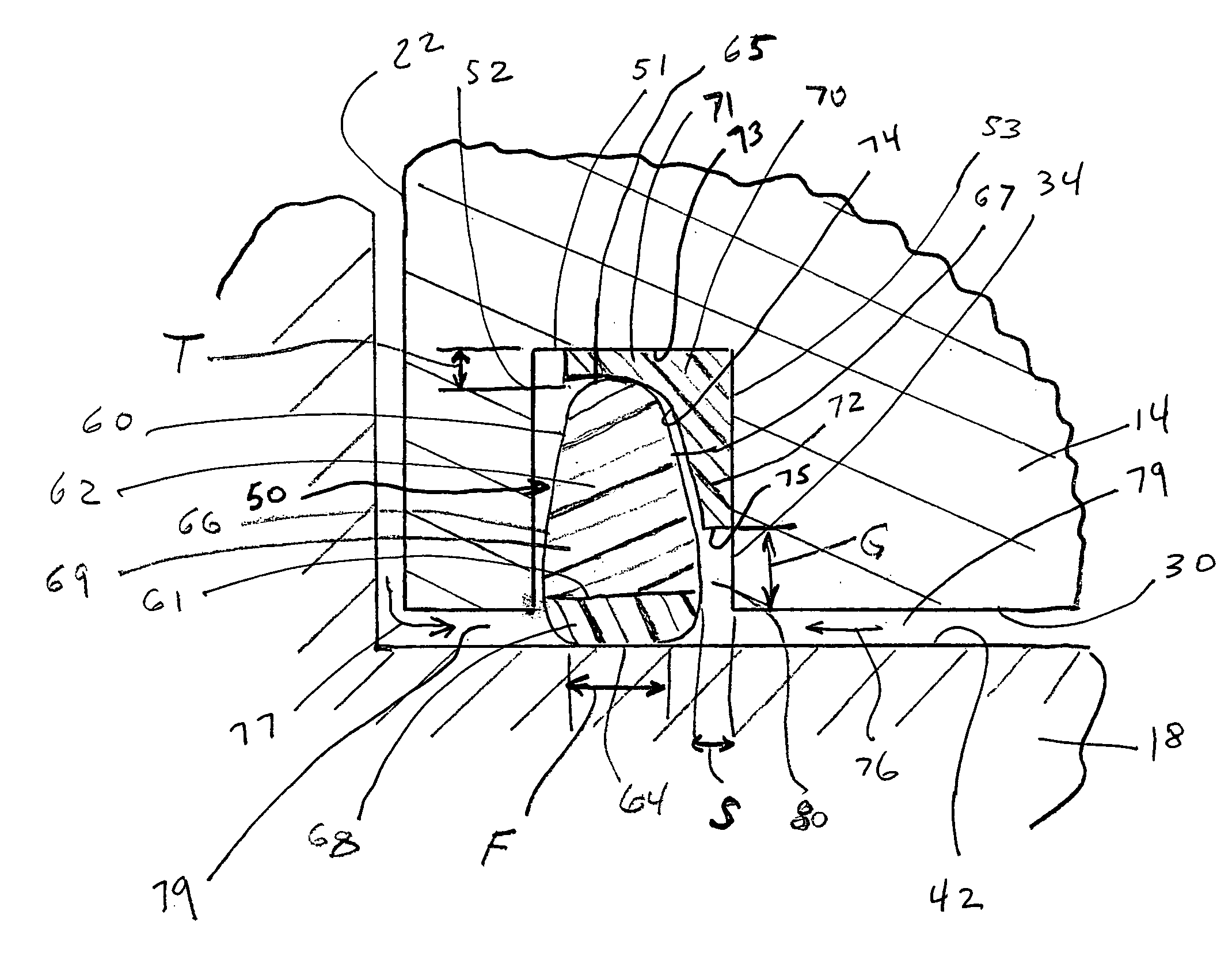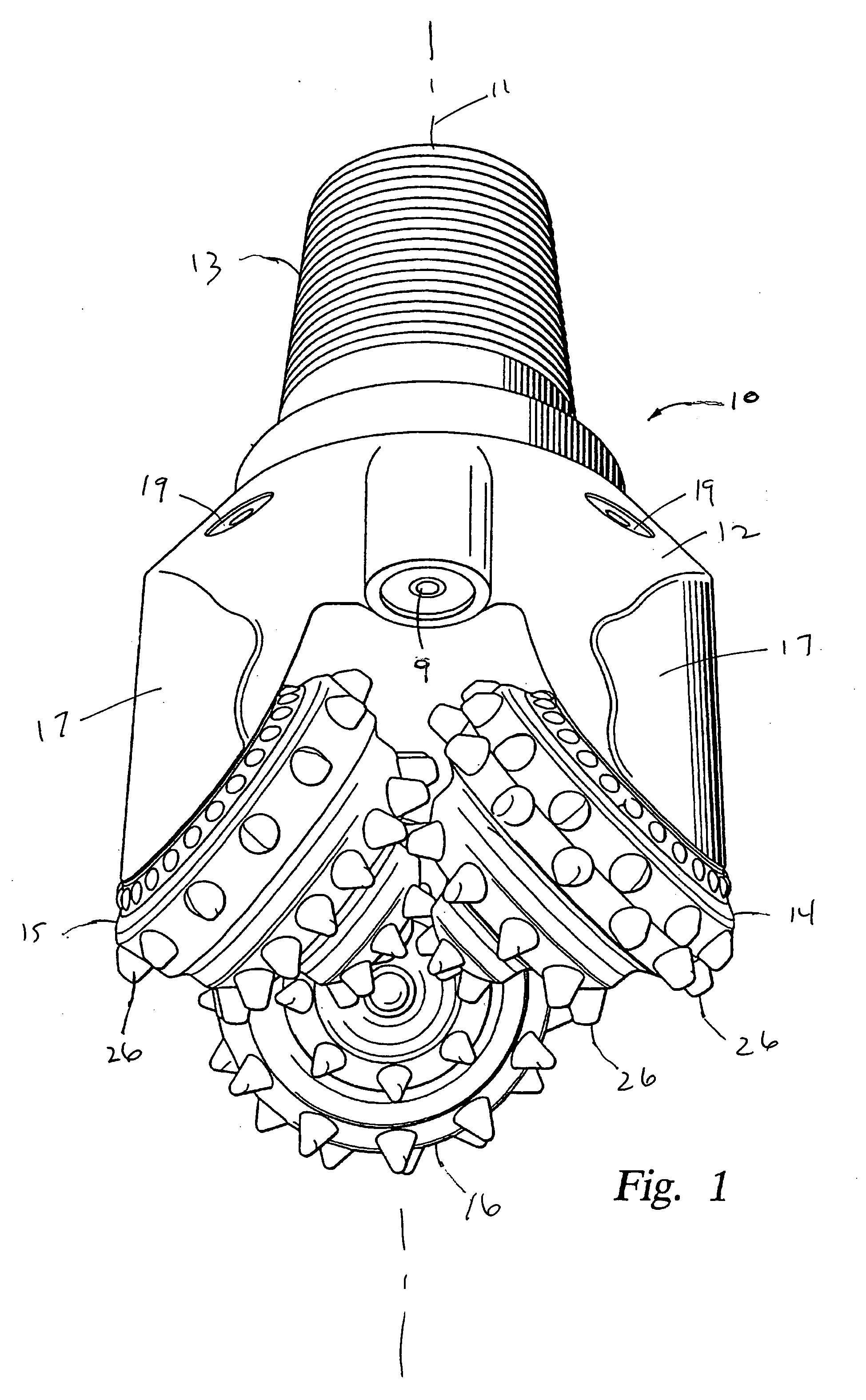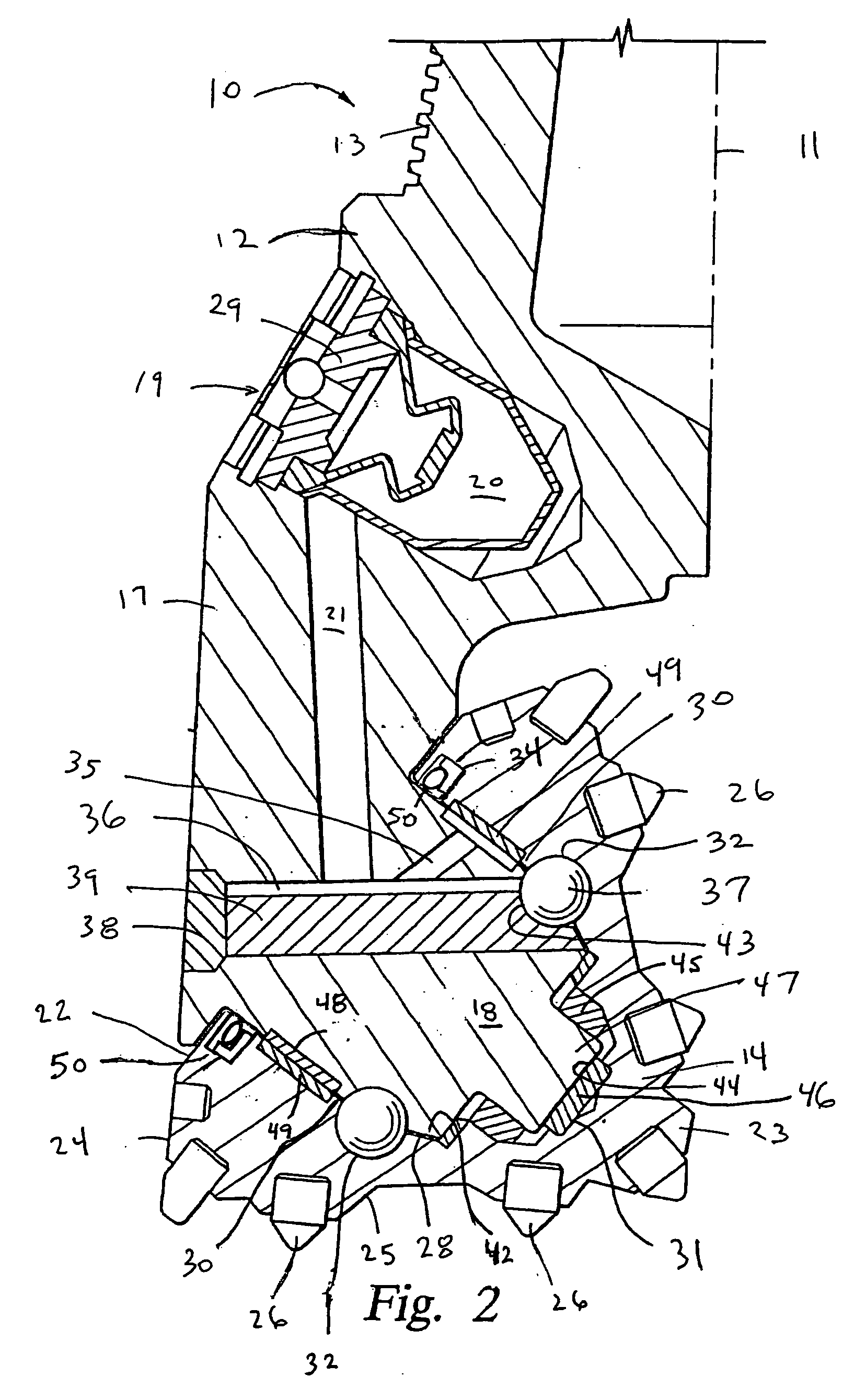Elastomeric seal assembly having auxiliary annular seal components
a technology of annular seals and elastomeric seals, which is applied in the direction of engine components, mechanical equipment, cutting machines, etc., can solve the problems of increasing the deflection and wear of seal components, increasing the amount of time required to make a round trip for replacing a bit, and essentially losing the amount of drilling operations
- Summary
- Abstract
- Description
- Claims
- Application Information
AI Technical Summary
Benefits of technology
Problems solved by technology
Method used
Image
Examples
Embodiment Construction
[0022] In one embodiment, a seal assembly for a drill bit includes an elastomeric annular sealing seal and an auxiliary annular seal member engaging the sealing seal, the sealing seal and the auxiliary seal member being disposed in a seal gland of the bit and collectively establishing a dynamic and a static seal.
[0023] In another embodiment, a drill bit includes a cone cutter rotatably mounted on a journal shaft, an elastomeric sealing seal disposed about the journal shaft in a seal gland, where the sealing seal includes a dynamic sealing surface for dynamically engaging the journal shaft and a static seal surface opposite from the dynamic sealing surface. The drill bit further includes at least one auxiliary annular seal member disposed about the journal shaft in the seal gland and engaging both the seal gland and the static surface of the sealing seal.
[0024] The drill bit and seal assemblies may include one or more auxiliary annular seal members in the seal gland engaging the st...
PUM
 Login to View More
Login to View More Abstract
Description
Claims
Application Information
 Login to View More
Login to View More - R&D
- Intellectual Property
- Life Sciences
- Materials
- Tech Scout
- Unparalleled Data Quality
- Higher Quality Content
- 60% Fewer Hallucinations
Browse by: Latest US Patents, China's latest patents, Technical Efficacy Thesaurus, Application Domain, Technology Topic, Popular Technical Reports.
© 2025 PatSnap. All rights reserved.Legal|Privacy policy|Modern Slavery Act Transparency Statement|Sitemap|About US| Contact US: help@patsnap.com



